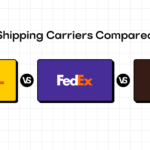Key Takeaways
- Retention is won in the post-purchase window—clear tracking, fast issue resolution, and easy returns set up the second order.
- Proactive “risk-of-delay” nudges + honest ETAs defuse WISMO and protect loyalty during peak.
- Branded tracking + helpful content (care tips, how-tos) keeps shoppers on-site and engaged.
- Exchange-first returns and simple loyalty enrollment convert refunds into future purchases.
- Measure what matters: time-to-second-order, cohort repeat rate, tracking CTR, DSAT/RSAT, exchange ratio.
Introduction
Holiday traffic brings a surge of first-time buyers, but most won’t return unless their after-checkout experience feels effortless and helpful. Discounts win the click; what happens next wins the relationship. In a season where delivery risk is higher and support teams are stretched, your edge isn’t another promo, it’s the confidence you create with transparent tracking, proactive communication, and friction-free resolutions. Treat post-purchase as a growth channel, and those seasonal browsers become long-term customers.
Why do holiday buyers fail to return?
Gift-driven intent, low brand familiarity, and delivery anxiety make holiday shoppers quick to churn. A beautiful product can still lose a repeat customer if:
- Expectations weren’t set clearly at checkout or in confirmation emails.
- Shipping felt like a black box, prompting “Where is my order?” tickets.
- The first-use moment lacked guidance or support.
- Returns were confusing, slow, or refund-only.
The good news: the fastest fixes live in how you communicate and resolve issues after the order is placed.
Which moments in the post-purchase journey create repeat intent?
Welcome & reassurance. An order confirmation that states what happens next, when to expect updates, and how to get help lowers anxiety and sets a professional tone.
Shipping transparency. A branded tracking hub with timely notifications, plus proactive exception alerts, keeps customers informed without making them chase status.
Useful content in-journey. Add care tips, setup guides, and small “while you wait” insights to your tracking experience. It reduces post-delivery friction and introduces relevant accessories without feeling salesy.
Friction-free resolutions. Make exchanges the easiest path, clarify timelines, and give customers self-serve options. When problems are handled quickly and fairly, trust (and repeat intent) grows.
The 30-Day Playbook: Turn first-timers into second-order customers
Day 0–1: “First-order concierge”
- Confirm promises. Restate the delivery window, what triggers updates, and how to reach support.
- Capture preferences. Invite shoppers to select interests (e.g., style, size, use case) to tailor future recommendations.
- Set expectations. Link to your returns/exchange policy in plain language.
In-transit: branded tracking that sells
- Keep traffic on-site. Use a branded tracking page that centralizes status, FAQs, and help.
- Be genuinely helpful. Add care/fit/setup content and short videos; spotlight accessories that enhance the initial purchase.
- Reduce Where IS My Order. Send milestone emails only when they add value (label created, out for delivery, delivered, delay flagged).
If risk of delay: the proactive micro-nudge
- Two-line heads-up. “Your order is running slightly behind; new window: Thu–Fri. Prefer to wait, swap, or cancel?”
- Offer choices. Present the next best action clearly to defuse frustration and prevent escalations.
Delivered: the “happy first use” sequence
- Welcome to ownership. Send a short setup/care guide and a one-tap path to help.
- Lightweight feedback. Ask one question (“Did everything arrive as expected?”) to catch issues early.
- Invite to loyalty. Reward the first engagement—points for registering, referrals, or reviews.
Returns that retain revenue
- Exchange-first design. Put size/color swaps and store credit upfront; refund remains available but secondary.
- Instant credit. Where feasible, provide instant store credit on return initiation to keep momentum.
- Clear timelines. Show pickup/label steps and when the replacement ships.
Days 14–21: Re-activation offer
- Contextual recommendations. Refill reminders, compatible add-ons, or styling tips based on the first order.
- Value, not pressure. Free shipping thresholds, loyalty multipliers, or bundle savings that feel helpful rather than pushy.
Day 30: Loyalty milestone
- Celebrate progress. “You’ve joined X members who get early access and faster support.”
- Tease what’s next. Member-only drops, extended return windows, or service perks that make staying engaged the obvious choice.
How CX (not discounts) differentiates you during peak season
Promotions are easy to copy; operational confidence is not. When customers experience consistent language, predictable updates, and human support, they remember how you made the season feel. That memory is what drives the second order in January, long after the sales banners come down. Codify the plays above as standards: clear writing, proactive notifications, self-serve options, and a returns path that saves the sale.
Conclusion
Holiday shoppers don’t become repeat customers by accident. They come back because you made the uncertain moments waiting, unboxing, and exchanging feel simple and respectful of their time. If you want a faster path to operationalizing this playbook, LateShipment.com unifies branded tracking with proactive exception alerts, exchange-first returns, and shipping audits. So your team can reduce WISMO, resolve issues faster, and turn more first-time buyers into second orders in January and beyond.
Frequently Asked Questions
1) When should I send the first reorder nudge?
Between days 14–21 for most non-perishables, anchored to the product’s typical replenishment or “second-use” moment. Lead with usefulness (care, setup, tips), then add a modest incentive if needed.
2) What’s a good repeat rate for holiday cohorts?
Benchmarks vary by category and price point. Track a 30- and 60-day repeat rate for your holiday cohort, then compare to non-holiday cohorts. The goal is directional improvement: lift time-to-second-order and reduce support frictions that block reorders.
3) How do I handle delays without burning trust?
Communicate early, be specific about the new window, and offer simple choices (wait/swap/cancel). Pair the update with a small make-good only when the impact is meaningful; over-compensating trains customers to expect it.
4) Are exchanges really better than refunds for loyalty?
Yes. When exchanges are clearly the easiest path. They preserve intent and keep customers engaged with your brand. Make swap options obvious, pre-fill choices when possible, and confirm replacement ship dates instantly.
5) We have limited resources—where do we start?
Launch a branded tracking hub, write a clear delay-nudge template, and rework your returns page for an exchange-first approach. Those three changes reduce tickets, protect revenue, and deliver the fastest, most visible lift in repeat intent.










![Holiday Season Marketing Calendar and Shipping Deadlines [2021] Blog Header](https://lswordpress.s3.amazonaws.com/blog/wp-content/uploads/2021/08/17065257/Holiday-Season-Marketing-Calendar-and-Shipping-Deadlines-2021-Blog-Header-1-420x280.png)
